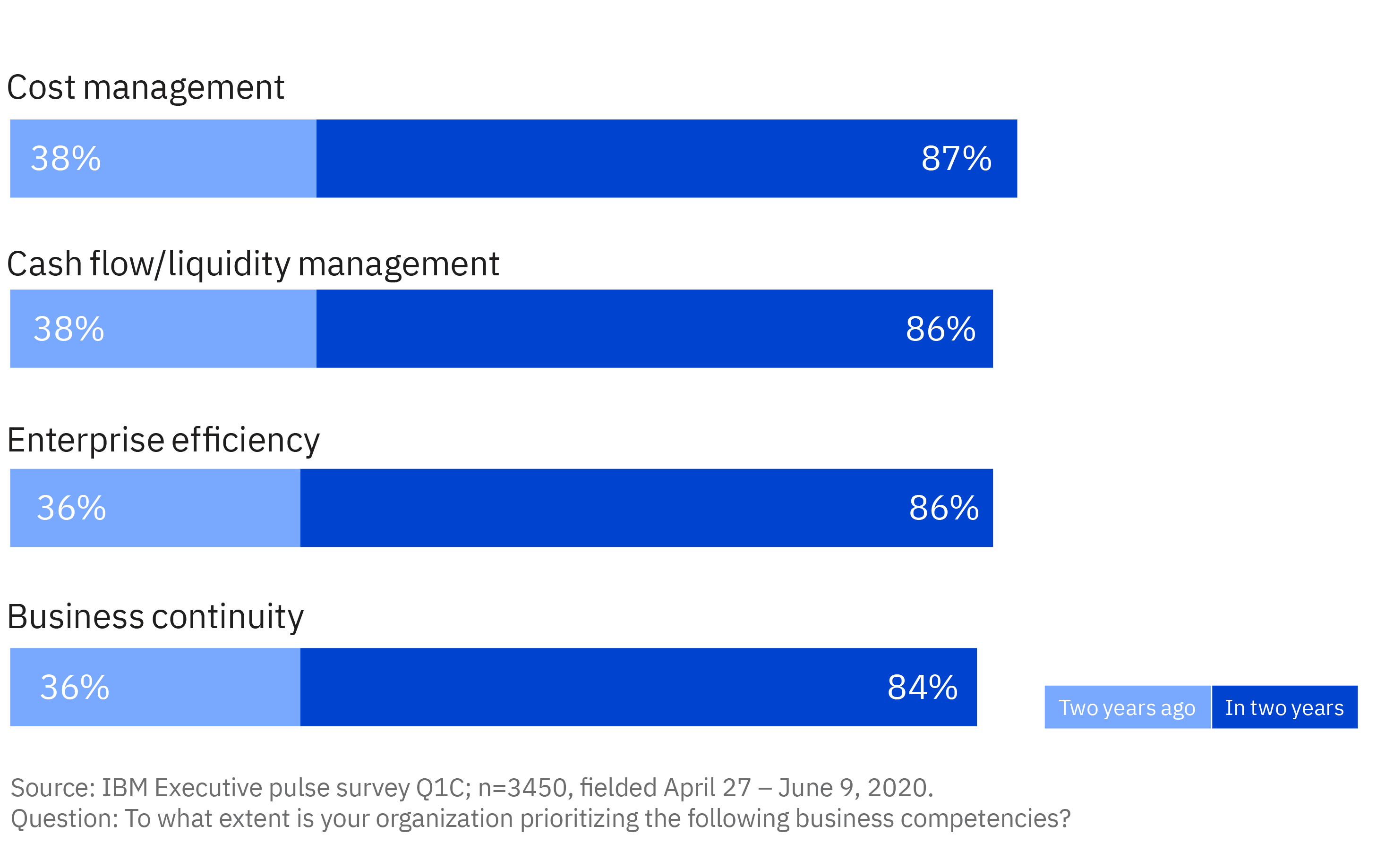Cost and value transformation in the era of COVID-19
As organizations around the world continue to navigate the turmoil of COVID-19, uncertainty remains about how businesses will finally reemerge, and what markets will look like. However, one thing is clear. In the different normal that ensues, resiliency, agility, and speed will separate the organizations that succeed from those that don’t.
In this disruption-ready reality, organizations will need to anticipate and respond more frequently to sudden and significant change. But they may not know in advance when or how often shocks will take place, or how they will affect individuals, regions, industries, or businesses. With COVID-19, for example, some industries experienced radical swings in areas of demand. To better prepare for a more volatile future, organizations should take steps now to develop their ability to respond quickly to unexpected challenges.
Beyond immediate health and safety concerns, cost control ranks high in business executives’ minds as they work to navigate the fallout of COVID-19. Sudden revenue decline, supply chain disruption, and rapid workforce adjustment – regarding how and from where employees work—all create substantial liquidity challenges. As Jerome Powell, Chairman of the U.S. Federal Reserve, noted, “the passage of time can turn liquidity problems into solvency problems.”
Executives are focused on cost and cash flow management

Value transformation versus cost cutting
Cash preservation is critical. Without a strategy that balances value transformation with cash preservation, organizations face the temptation to cut costs in blunt, linear, traditional ways that preserve cash—but rob them of the capacity to flourish in the future. Among these cuts, the impulse is often to lay off people and ask the organization to do more with less. But companies that cut the deepest do not usually rebound well from recessions. One study found, for instance, that among organizations that faced past crises, 37 percent of those who deployed a balanced, “reduction plus offensive investment” approach went on to outperform their rivals in subsequent years, in contrast with those that focused on defensive, reduction-focused approaches.
The answer, then, isn’t merely cost cutting—it’s a focus on cost and value transformation: Finding better ways to organize and run a business that lower cost and make it more variable, while enabling investments so the company is positioned for growth.
Exponential technologies give organizations powerful new ways to pinpoint cost and value drivers, diagnose and prioritize business areas, and create new approaches to value transformation.
Unavailable just a few years ago, exponential technologies including artificial intelligence (AI) with natural language processing, robotics and automation, IoT, and a variety of hybrid cloud-based analytical tools give organizations powerful new ways to pinpoint cost and value drivers, diagnose and prioritize business areas, and create new approaches to value transformation. Furthermore, “As a Service” business models enable more flexible cost structures.
Based on our work with clients through many challenging times, including the ongoing COVID-19 crisis, we see value transformation comprising three major phases—Survive, Transition, and Thrive. Its fundamental purpose, though, is to lessen as much as possible the impact of the first two. By taking the right steps now, a company confronted with an unexpected disruption will be better equipped to shorten its survive phase and transition quickly to growth.
Meet the authors
Edward Giesen, Global IBM Consulting Partner, European Growth Leader Digital Strategy, Digital Strategy Center of CompetenceJean-Michel Fally, Partner, Enterprise Strategy, IBM Consulting
Originally published 10 August 2020


